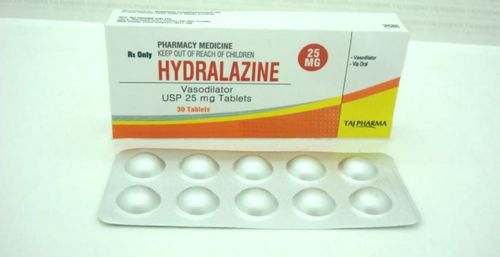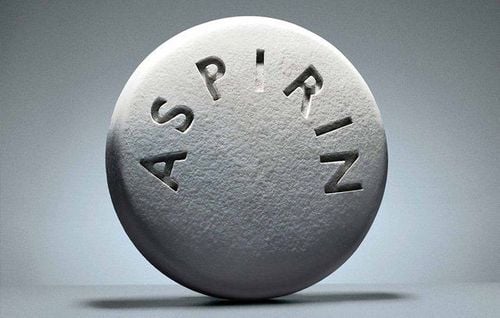This is an automatically translated article.
Amyl Nitrite is a vasodilator formulated for inhalation, due to its rapid evaporation properties. Amyl Nitrite is a quick-acting medicine that helps relieve the symptoms of angina.1. What is Amyl Nitrite?
Amyl Nitrite is a vasodilator formulated as an inhalation (Inhalant). Inside each thin capsule is 3mL Amyl Nitrite that is easily crushed with a finger.
Amyl nitrite is a rapidly acting vasodilator used by inhalation.
Properties of Amyl nitrite: It is a yellow, transparent liquid with a distinctive fruity odor, which is volatile, even at low temperatures, and is flammable. The structural formula of Amyl nitrite is: (CH 3 ) 2 CHCH 2 CH 2 ONO.
2. Uses of Amyl Nitrit
Amyl Nitrit is a non-specific relaxant of smooth muscle with the most prominent effect occurring in vascular smooth muscle. This action on vascular smooth muscle leads to coronary vasodilation and decreased systemic vascular resistance, reducing preload and afterload for the left ventricle.In patients with myocardial ischemia due to reduced blood flow to the myocardium, when using the drug, there is a reduction in patients with angina pectoris, reducing chest pain. Amyl nitrite vapors when inhaled are rapidly absorbed through the pulmonary alveoli, exhibiting therapeutic effects within one minute of inhalation. The drug after administration is rapidly metabolised, about a third of inhaled Amyl nitrite is excreted in the urine.
Thanks to the vasodilator effect of the drug Amyl nitrite, which is indicated for rapid relief of angina attacks. The effects of this medicine appear within 30 seconds and last for about 3 to 5 minutes.
3. When is Amyl nitrite contraindicated?
Amyl nitrite can increase intraocular pressure and increase intracranial pressure, so Amyl nitrite is contraindicated or should be used with extreme caution in patients with glaucoma, recent head trauma or or patients with cerebral hemorrhage.
In addition, Amyl nitrite may cause fetal harm when administered to pregnant women because it significantly reduces the mother's systemic blood pressure and blood flow across the placenta, causing anemia in the infant. Therefore, it should not be used in pregnant women if the benefit to the mother does not outweigh the risk to the fetus.
4. How to use Amyl Nitrite
Patient in a supine or sitting position, take one Amyl nitrite capsule away from the face, then crush the capsule between the fingers and place it under the patient's nose.
Dosage: Two to six inhalations of vapor from the capsule are usually sufficient to produce a rapid therapeutic effect. If necessary, the dose may be repeated in 3 to 5 minutes.
Care should be taken to avoid inhaling excessive amounts of the drug when it is administered by someone other than the patient himself.
Overdose: Overdose can occur if inhaled doses of 5 to 10 drops of Amyl nitrite cause intense flushing of the face, accompanied by a feeling of headache. Inhaling larger amounts may produce a feeling of suffocation and muscle weakness...
Overdose management: Measures can be taken to facilitate blood return to the heart such as a low head position, Take deep breaths and move your extremities. Note that the use of epinephrine may exacerbate shock-like reactions.
Storage of the drug: Because the liquid inside the capsule can easily evaporate, it should be protected from light. Storage must be in a cold place with a temperature between 2 and 8 degrees Celsius.
5. Side effects when taking Amyl nitrite
When using the drug in addition to the main effects, the drug also has a risk of causing side effects, including:
Side effects occur immediately upon exposure to Amyl nitrite vapor: Occurrence of dizziness, fatigue or Transient syncope or other signs of cerebral ischemia due to postural hypotension may be experienced after inhalation of amyl nitrite. To reduce the above side effects, measures can be used to facilitate the return of the veins to the heart such as lying with the head low, breathing deeply and moving the extremities. Mild headache and facial flushing are also common when taking the drug. Serious hypersensitivity reactions may occur such as: Syncope, urinary incontinence, hypotension, pallor, cold sweats, tachycardia, restlessness, vomiting and nausea. Excessive use of amyl nitrite can cause methemoglobinemia. Abuse: Because nitrites are volatile, they can be abused for sexual stimulation, with a common side effect being headaches. Drug dependence: May reduce effects and dependence on the drug with subsequent use. But specific research is needed. Notify your doctor when side effects appear, if serious you should be taken to the nearest medical facility.
6. Notes when using the drug Amyl nitrite
Amyl nitrite is volatile and highly flammable if exposed to a fire source. Do not use where it may catch fire and keep away from open flames or sparks.
Amyl nitrite intolerance can occur with repeated use of the drug for a long time. Tolerance can be improved by starting with the smallest effective dose and alternating with another coronary vasodilator.
High doses of nitrite may produce methemoglobinemia, especially in people with methemoglobin reductase deficiency or other metabolic abnormalities that interfere with the normal conversion of methemoglobin back to hemoglobin. If the symptoms do not decrease or worsen, you should immediately go to a medical facility for timely emergency treatment.
Drug interactions: Taking Amyl nitrite after drinking alcohol can worsen side effects and can cause severe hypotension, cardiovascular collapse, and death.
Above is the information about the drug Amyl nitrite. The drug is used under the prescription of a doctor, do not arbitrarily use it without knowing the medical condition and the harmful risks of the drug to the body.
Please dial HOTLINE for more information or register for an appointment HERE. Download MyVinmec app to make appointments faster and to manage your bookings easily.
Reference source: drugs.com












